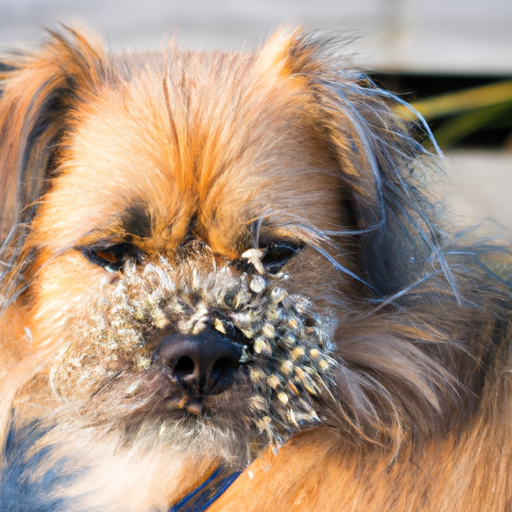Introduction
As a caregiver to your beloved pooch, you’re always on the lookout for potential hazards. You’ve likely tackled fleas, ticks, and allergies. But have you heard about foxtails on dogs? If not, this comprehensive guide will provide the insight you need to protect your furry friend from this common, yet often overlooked, danger.
What Are Foxtails?
Foxtails are clusters of seeds from certain types of grasses, named for their pointed, brush-like appearance that resembles a fox’s tail. While they may seem harmless, they can pose a serious risk to dogs.
These barbed seed heads can become embedded in a dog’s skin, ears, eyes, or nose. Once lodged, they can cause severe discomfort and even life-threatening infections.
How Do Dogs Come into Contact with Foxtails?
Dogs can encounter foxtails in various ways:
- Walking through tall grass or underbrush where these plants thrive.
- Sniffing around in areas where dried foxtails have fallen.
- Chasing a ball or toy that has landed near a foxtail plant.
While any dog can come into contact with foxtails, those with long fur and those who spend a lot of time outdoors are at a higher risk.
The Dangers of Foxtails to Dogs
Now that you understand what foxtails are and how your dog can encounter them, let’s explore why they’re so dangerous.
- Skin: Foxtails can burrow into a dog’s skin, causing painful abscesses.
- Ears: A foxtail in the ear can lead to an ear infection or rupture of the eardrum.
- Eyes: Foxtails can cause corneal ulcers, infections, and even blindness.
- Nose: Inhaled foxtails can cause intense sneezing, nasal discharge, and potentially severe respiratory issues.
- Digestive tract: If ingested, these pesky seeds can perforate the lining of a dog’s throat, stomach, or intestines.
How to Protect Your Dog from Foxtails
Protection is always better than cure. Here are some tips to shield your dog from foxtails:
- Regularly inspect your dog’s coat, especially after outdoor activities.
- Keep your yard clean and free of foxtail plants.
- Consider protective gear like foxtail-resistant hoodies or booties for your dog.
- Regular grooming can help keep your dog’s fur short and less likely to attract foxtails.
Frequently Asked Questions (FAQs)
Q1: What are the signs my dog has a foxtail?
A1: Signs include excessive scratching, head shaking, squinting, coughing, or visible discomfort.
Q2: Are foxtails season dependent?
A2: Yes, they are more prevalent in warmer months when the grasses dry out and the seeds detach.
Q3: Can a vet remove a foxtail?
A3: Absolutely! If you suspect a foxtail, contact your vet immediately.
Q4: Are some breeds more susceptible to foxtails?
A4: Breeds with long fur and outdoor lifestyles are more at risk, but any dog can get a foxtail.
Armed with this knowledge, you as a caregiver can ensure your dog enjoys a happy, healthy, and foxtail-free life!



